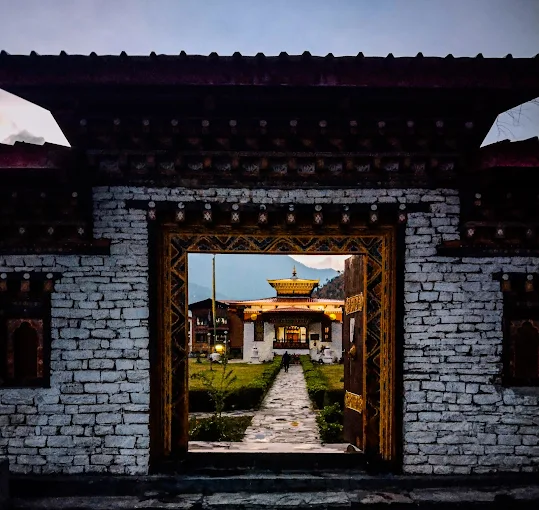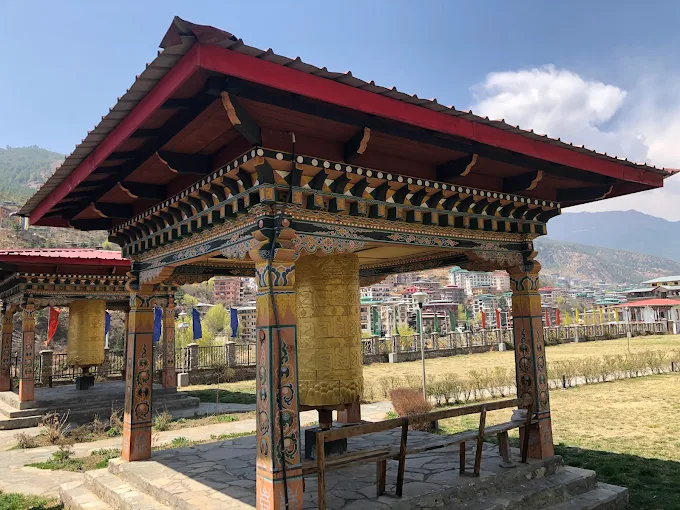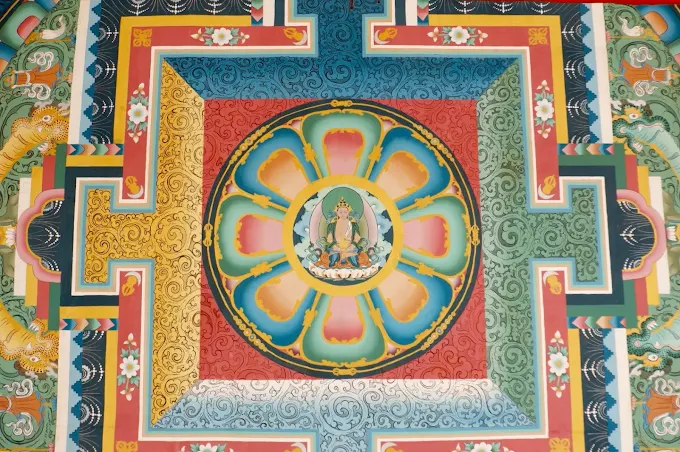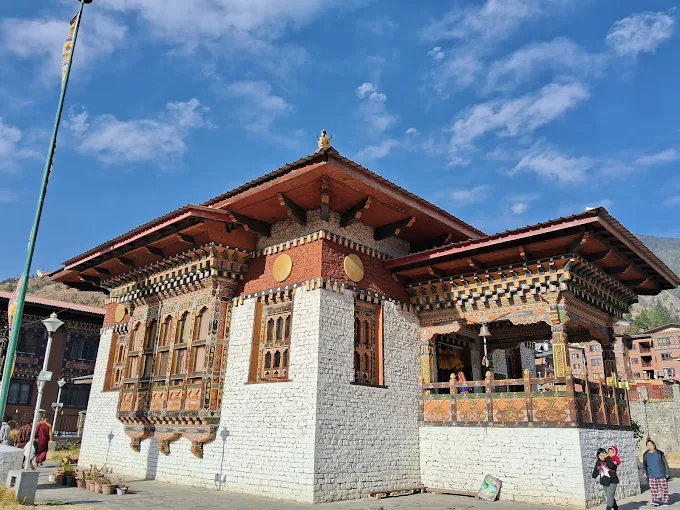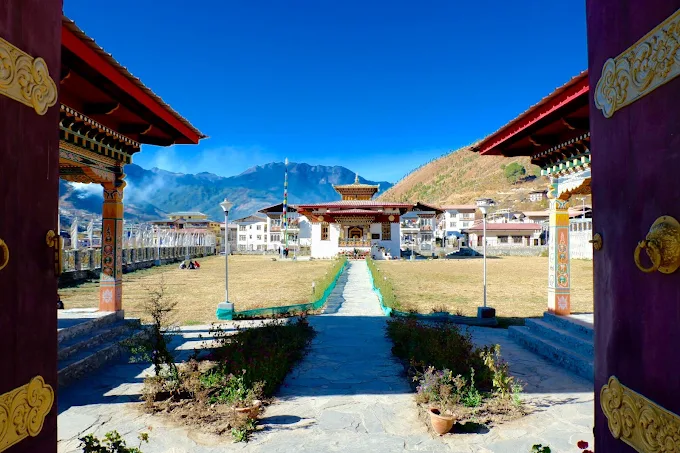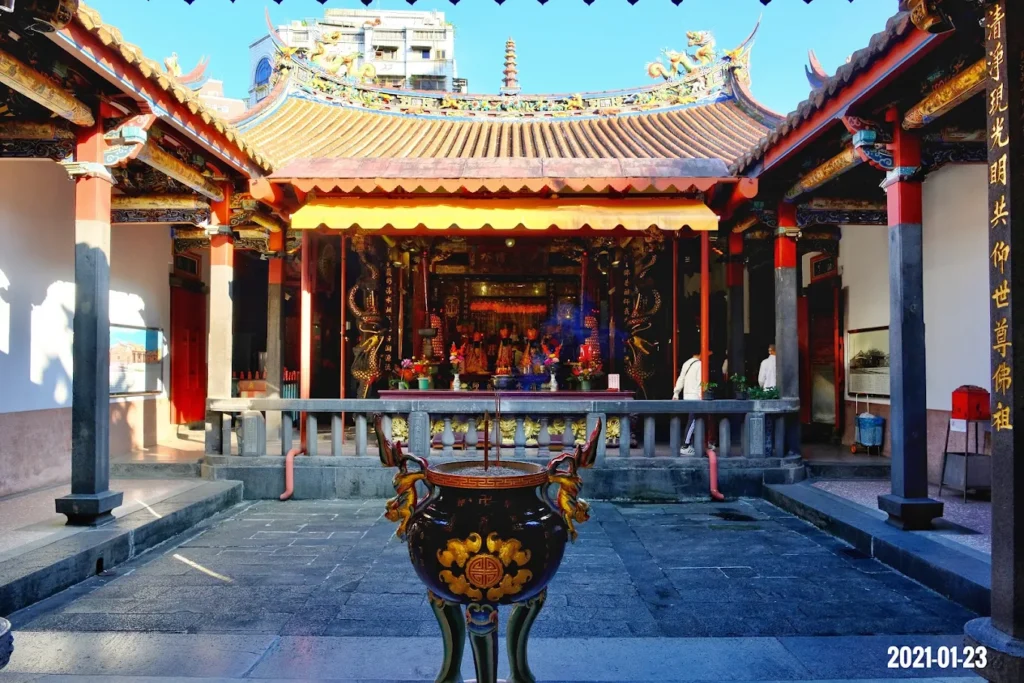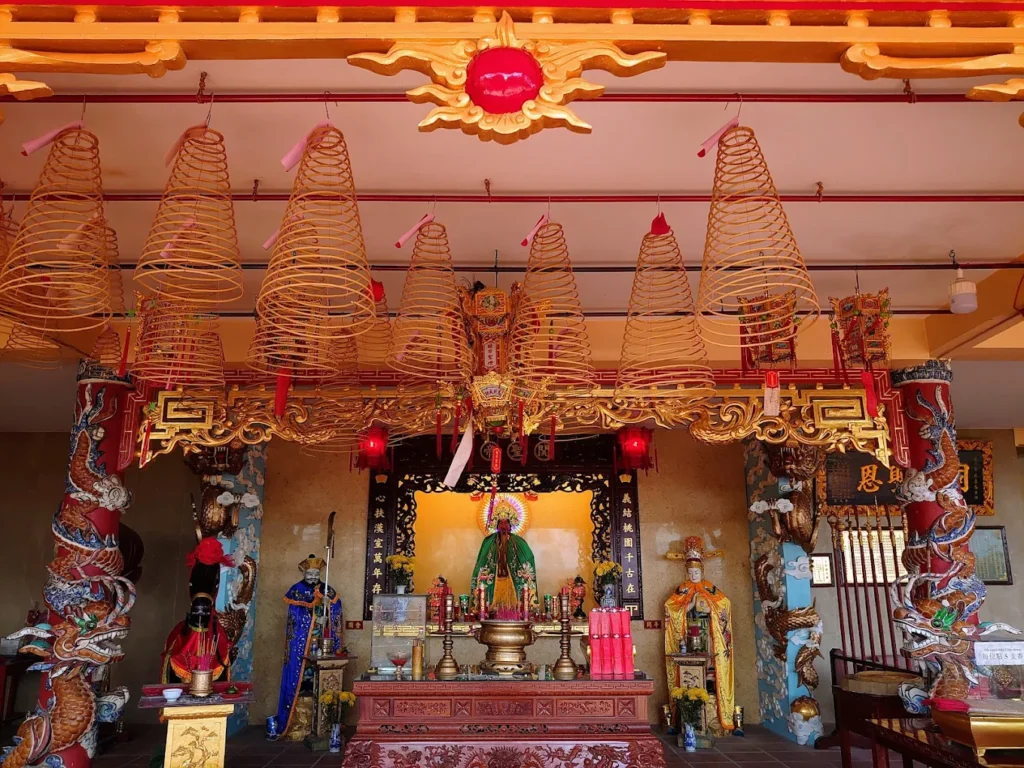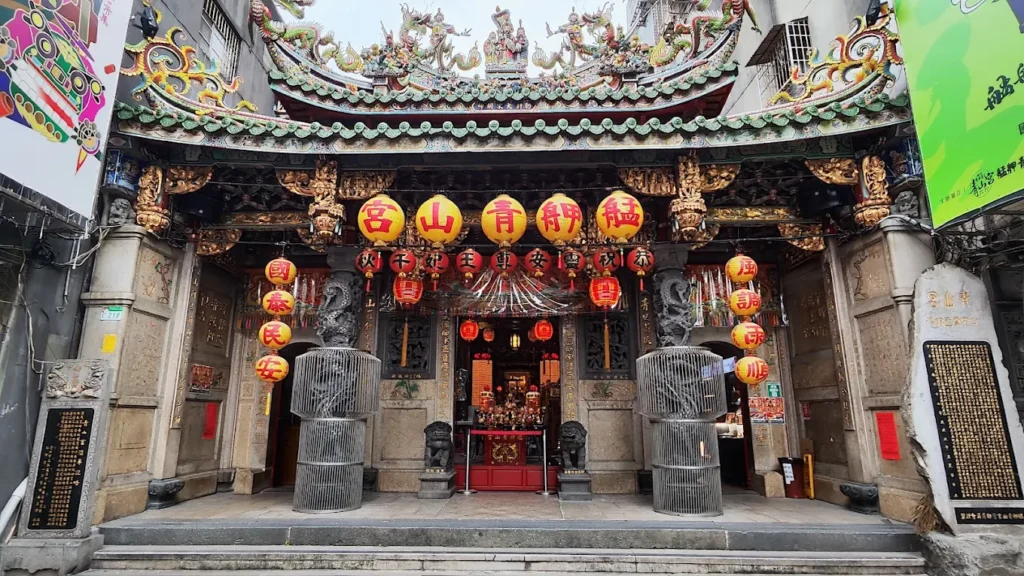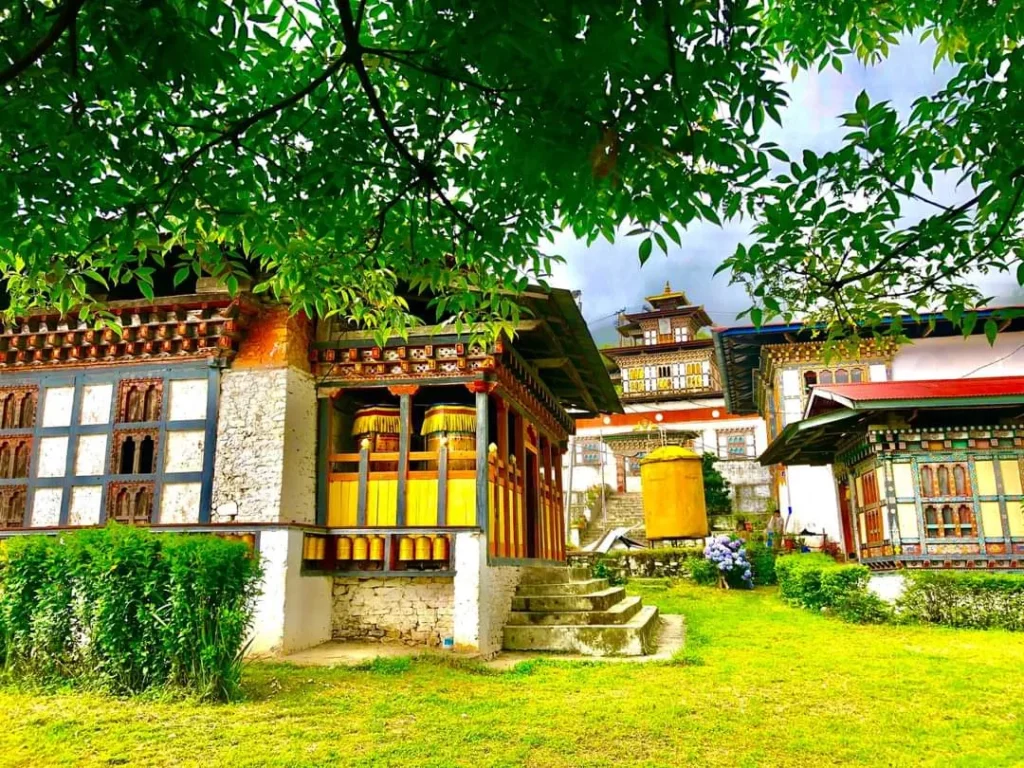Changjiji Temple: Thimphu’s Tranquil Haven of Himalayan Serenity
Nestled along the bustling road from Babesa to Thimphu’s heart, Changjiji Temple offers a quiet retreat near the city’s helipad, its whitewashed walls glowing under the Himalayan sun. This modern lhakhang [temple], rooted in Bhutan’s Vajrayana Buddhist tradition, hums with the soft spin of prayer wheels [chhos khor] and the faint scent of juniper incense. Overlooking Thimphu Valley, the temple’s serene courtyard frames sweeping views of rugged mountains and the distant golden shimmer of Buddha Dordenma. Built recently, it serves as a peaceful sanctuary for locals seeking blessings and travelers exploring Thimphu’s spiritual pulse. With ample parking and a tranquil ambiance, Changjiji Temple invites all to pause, reflect, and connect with Bhutan’s living Buddhist heritage.
Oasis of Peace: Overview and Significance
Changjiji Temple, located in Thimphu District, embodies Bhutan’s Vajrayana Buddhist spirit in a modern setting. Its proximity to urban landmarks like the helipad and Buddha Dordenma makes it a unique blend of accessibility and serenity, drawing devotees and visitors to its quiet embrace.
Historical Roots and Legacy
As a recently constructed lhakhang, Changjiji Temple reflects Thimphu’s evolving spiritual landscape. While specific founding details are scarce, its modern design aligns with Bhutan’s efforts to expand Buddhist sites amid urbanization. Likely established in the late 20th or early 21st century, it serves as a complement to older temples like Changangkha Lhakhang, reinforcing the Drukpa Kagyu tradition’s presence in the capital. Its creation underscores Bhutan’s commitment to preserving Gross National Happiness through accessible spiritual spaces.
- Key Milestones:
- Late 20th/early 21st century: Likely constructed as a modern Buddhist site.
- Ongoing: Serves as a local prayer and pilgrimage hub.
- Notable: Offers views of Buddha Dordenma, enhancing its appeal.
Cultural and Spiritual Significance
Changjiji Temple, rooted in Vajrayana Buddhism, likely follows the Drukpa Kagyu tradition, emphasizing Mahamudra [Great Seal], a meditative practice for realizing the mind’s clarity. Its serene setting fosters devotion, with locals visiting on auspicious days for blessings. As a newer site, it supports Thimphu’s spiritual tourism, complementing landmarks like Tashichho Dzong. Its role in daily prayers reinforces Bhutan’s cultural identity, blending tradition with modernity.
- Cultural Roles:
- Provides a tranquil space for prayer and reflection.
- Enhances Thimphu’s spiritual tourism network.
- Upholds Bhutan’s Buddhist heritage in an urban context.
Community and Global Connections
The temple serves Thimphu’s residents, particularly those in Changjiji, through communal prayers and blessings. Its accessibility draws tourists, who experience Bhutanese Buddhism alongside locals. The temple’s proximity to Buddha Dordenma and urban amenities fosters cross-cultural exchange, supported by Bhutan’s tourism initiatives. Visitors from Asia and beyond find its peaceful ambiance a gateway to Thimphu’s spiritual heart.
- Community Impact:
- Hosts local prayers, strengthening community ties.
- Attracts global tourists, promoting cultural exchange.
- Supports Thimphu’s role as a Buddhist hub.
As prayer wheels spin in the cool Himalayan breeze, Changjiji Temple’s modern serenity invites exploration of its architectural simplicity and spiritual warmth, a quiet gem in Thimphu’s bustling valley.
Sanctuary of Simplicity: Architectural and Spiritual Features
Changjiji Temple’s modest design reflects Bhutanese aesthetics, blending modern construction with traditional elements. Set near Thimphu’s helipad, its architecture harmonizes with the valley’s rugged beauty, offering a serene space for devotion.
Iconic Design and Structures
The temple features whitewashed walls, wooden beams, and a simple courtyard, typical of Bhutanese lhakhangs. Prayer wheels line the exterior, inviting circumambulation, while a modest chorten [stupa] anchors the grounds. Its elevated position offers panoramic views of Thimphu’s mountains and Buddha Dordenma, enhancing its spiritual allure. Ample parking ensures accessibility, a modern touch for urban pilgrims.
- Design Highlights:
- Whitewashed walls with minimalist Bhutanese motifs.
- Courtyard chorten, symbolizing enlightenment.
- Elevated site with views of Thimphu Valley and Buddha Dordenma.
Sacred Statues and Relics
While specific statues are undocumented, the temple likely houses images of Shakyamuni Buddha or Avalokiteshvara [Chenrezig], common in Drukpa Kagyu lhakhangs. These would be crafted in bronze or wood, adorned with silks, reflecting Bhutanese artistry. The prayer wheels, inscribed with mantras, serve as sacred relics, amplifying the site’s spiritual potency for devotees.
- Statue Details:
- Likely Buddha or Avalokiteshvara, bronze or wood, ~1–2 meters.
- Prayer wheels with mantras, central to devotion.
- Minimalist shrine, fostering contemplation.
Artistry and Environmental Harmony
Local artisans, trained in Zorig Chusum [13 traditional crafts], likely contributed simple frescoes or carvings, using natural pigments and sustainable timber. The temple’s compact design minimizes environmental impact, aligning with Bhutan’s eco-conscious ethos. Surrounded by Thimphu’s hills, it blends seamlessly with the landscape, its prayer flags fluttering in harmony with the valley’s winds.
- Artistic Features:
- Simple frescoes of auspicious symbols, like the Eight Lucky Signs.
- Carved wooden beams, reflecting Bhutanese craftsmanship.
- Eco-friendly design, preserving Thimphu’s natural beauty.
The temple’s understated elegance and scenic setting prepare visitors for its spiritual practices, where quiet devotion meets communal warmth.
Quiet Devotion: Rituals and Practices
Changjiji Temple’s spiritual life centers on simple yet profound Buddhist practices, likely rooted in the Drukpa Kagyu tradition. Its tranquil ambiance fosters prayer and reflection, drawing locals and visitors into Thimphu’s sacred rhythm.
Daily and Unique Practices
Devotees spin prayer wheels and offer butter lamps, seeking blessings for peace and prosperity. Morning prayers, led by monks, may include Mahamudra meditations, focusing on mental clarity. Circumambulation of the chorten, performed clockwise, accumulates merit, a practice open to all. The temple’s quiet setting makes it ideal for personal reflection, a unique draw in urban Thimphu.
- Daily Practices:
- Prayer wheel spinning and circumambulation, ~20–30 minutes.
- Butter lamp offerings for wisdom.
- Morning prayers, led by resident monks.
Festival Traditions
While specific festivals are unconfirmed, the temple likely hosts prayers during Losar [Bhutanese New Year] in February/March, with communal lamp lightings. Auspicious days, such as the 10th lunar day, may see increased devotion, with locals offering prayers for blessings. These events, distinct from daily practices, foster community unity.
- Festival Highlights:
- Losar: Likely communal prayers and lamp offerings.
- Auspicious days: Increased prayer activity, pending verification.
- Modest gatherings, emphasizing tranquility.
Community and Visitor Engagement
The temple engages Changjiji’s residents through daily prayers, with monks guiding tourists on its role in Thimphu’s spiritual life. Visitors can join circumambulation or light lamps, fostering cultural exchange. Its urban accessibility ensures it remains a communal hub, connecting locals and global travelers in shared devotion.
- Engagement Activities:
- Guided tours by monks, ~15–20 minutes.
- Visitor participation in prayer wheel spinning.
- Community prayers, uniting locals and tourists.
The temple’s quiet rituals, steeped in simplicity, guide visitors toward practical insights, ensuring a seamless journey to its serene grounds.
Journey to Changjiji: Visitor Information
Changjiji Temple, a short drive from Thimphu’s center, offers an accessible retreat for spiritual and cultural exploration. Its practical logistics and nearby attractions make it a compelling stop in Bhutan’s capital.
Navigating the Temple
Located in Changjiji, near the Thimphu helipad, the temple is a 5–10-minute drive from Thimphu town via the Babesa–Thimphu road. Follow signs past the helipad to a quiet lane, where ample parking awaits. The temple’s courtyard, with views of Buddha Dordenma, is a short walk from the entrance, marked by prayer flags.
- Navigation Tips:
- Drive from Thimphu via Babesa–Thimphu road.
- Look for helipad and temple signs.
- Expect a 2–5-minute walk from parking.
Practical Details and Etiquette
The temple is open daily from 8 AM to 5 PM, with no entry fee, though donations are appreciated. Visitors must dress modestly (long sleeves, no shorts), remove shoes before entering the shrine, and avoid photography inside. Silence phones and respect prayer spaces. The full address is Changjiji, Thimphu District, Thimphu 11001, Bhutan. Accessibility is moderate, with flat parking but steps to the shrine.
- Logistics:
- Address: Changjiji, Thimphu District, Thimphu 11001, Bhutan.
- Hours: 8 AM–5 PM, daily.
- Transport: Taxi (~Nu 100) or private vehicle.
- Etiquette: No indoor photography, dress modestly.
Immersive Experiences and Surroundings
Visitors can spin prayer wheels or light butter lamps (~Nu 20) for blessings, guided by monks during morning hours. The temple’s views of Thimphu’s mountains and Buddha Dordenma are stunning. Nearby, Buddha Dordenma (10-minute drive) offers panoramic vistas, while the National Memorial Chorten (15-minute drive) deepens cultural exploration. The Weekend Market (12-minute drive) showcases local crafts.
- Immersive Tips:
- Spin prayer wheels for merit.
- Visit at sunrise for serene mountain views.
- Explore Buddha Dordenma and National Memorial Chorten nearby.
The temple’s accessibility and tranquil charm invite deeper exploration of its spiritual and cultural significance, connecting visitors to Thimphu’s Buddhist soul.
Wisdom of Changjiji: Cultural and Spiritual Insights
Changjiji Temple offers subtle yet profound insights into Bhutan’s Vajrayana heritage, its simplicity reflecting Thimphu’s evolving spiritual landscape. Its role as a community anchor underscores its quiet relevance.
Philosophical Foundations
Likely rooted in Drukpa Kagyu, the temple emphasizes Mahamudra, a meditative path to realize the mind’s luminous nature. Prayer and circumambulation foster mindfulness and compassion, aligning with Bhutan’s Gross National Happiness ethos. Visitors can explore these concepts through monk-led talks, gaining insight into Buddhist practice.
- Key Concepts:
- Mahamudra: Non-conceptual meditation for clarity.
- Compassion: Embodied in prayer and offerings.
Cultural and Symbolic Depth
The chorten symbolizes the Buddha’s mind, guiding devotees toward enlightenment. Prayer wheels, inscribed with mantras, amplify spiritual merit, a practice shared with visitors. The temple’s modern design reflects Bhutan’s balance of tradition and progress, its views of Buddha Dordenma linking it to Thimphu’s spiritual network.
- Symbolic Elements:
- Chorten: Symbol of enlightenment and stability.
- Prayer Wheels: Tools for merit accumulation.
Community and Environmental Resilience
Changjiji Temple unites locals through prayers, fostering social cohesion. Its eco-conscious design, using local materials, aligns with Bhutan’s environmental policies. By welcoming tourists, it promotes cultural continuity, ensuring Thimphu’s Buddhist heritage thrives amidst urbanization.
- Resilience Efforts:
- Communal prayers, strengthening community bonds.
- Sustainable design, preserving Thimphu’s ecology.
The temple’s simplicity and serenity resonate with themes of peace and connection, inviting visitors to experience its quiet power.
Why You Have to Get to Changjiji Temple
Changjiji Temple is a must-visit for its tranquil charm and seamless blend of Bhutan’s Buddhist heritage with Thimphu’s modern pulse. Nestled near the city’s helipad, its whitewashed lhakhang and spinning prayer wheels offer a serene escape, with stunning views of Thimphu’s mountains and Buddha Dordenma. As a modern sanctuary, it welcomes locals and travelers to share in quiet prayers and cultural exchange, reflecting Bhutan’s Gross National Happiness. Its accessibility and peaceful ambiance make it a hidden gem, beckoning all to discover Thimphu’s spiritual heart, where prayer flags dance and Himalayan serenity reigns.
